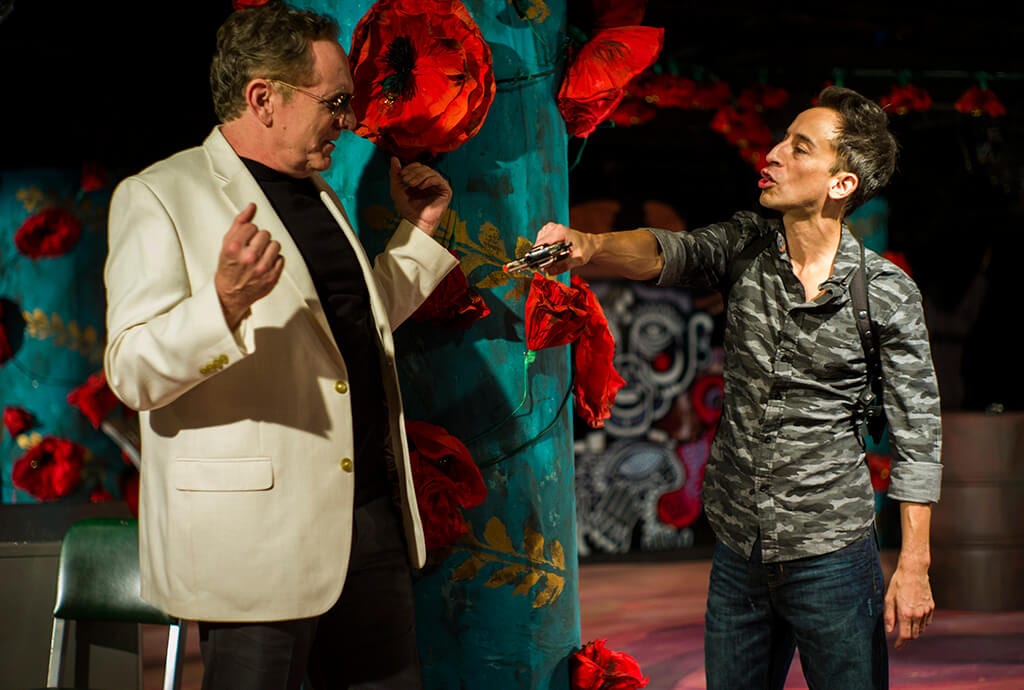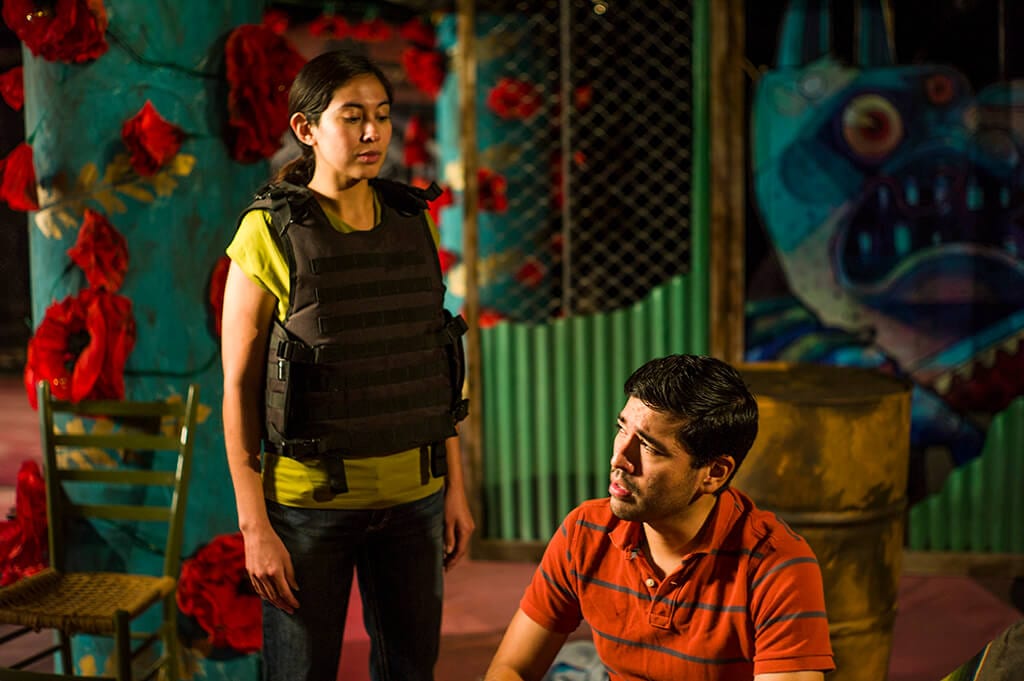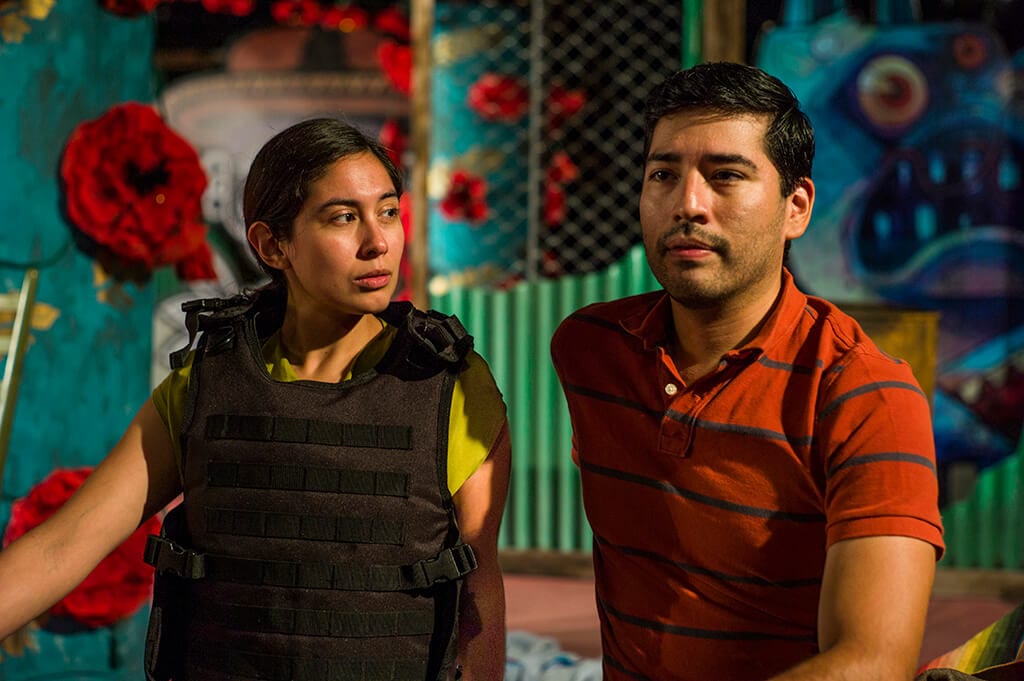That was so…cultural, deadpans the white-jacketed American after a scene of violence and otherworldly closeness with departed spirits in Mexico, as if this horrid mess in Chihuahua has no relationship to the bottomless appetite for drugs in the U.S. Celebrated emerging playwright Olmos immerses his English-speaking audience in the soulscape of a nearby land nearly consumed in narco-terrorism. It’s based on the true story of Marisol Valles Garcia who, as a twenty year old criminology student, volunteered to be chief of police in her native village of Praxedis in an utterly heroic bid to fight back for a civil society after a string of police chiefs had either resigned or been gruesomely murdered.
But this is expressionistic truth, not narrative linearity. Here the dead are always near, and there are magical radios, in a dark space defined by strings of oversized poppies. There are also real, wonderfully vivid, and fully lived characters here. Blake Hackler is a quirky, captivating standout as the insecure, overcompensating, low level narco el morete, so empowered by having a gun, so always on the brink of humiliation. Stephanie Cleghorn Jasso in the lead role based on Valles Garcia identified only as “a brave woman in mexico”, brings a riveting concentrated intensity and a thrilling sense of risk and truth. In a notable performance by Ivan Jasso, we feel her husband’s desperation for a normal life in his ritual of addressing an imagined daughter not yet even conceived as they try to survive emotionally in an inconceivable world.
And then there are the craftier touches from masterful and adventurous director Katherine Owens. We get the silky baritone of Bruce DuBose, well deployed here in the arch and effortlessly powerful American “guero”, or fair one. We could listen to him read the phone book. David Lugo, as the spectral murdered police chief, is presented as half Lon Chaney horror show figure rather than heart-touching lost human, but the effect works. It’s creepy alright. And what an instrument! We also get thoughtful, inventive sound design by DuBose, equal parts cultural and nightmarish. In the grip of the grimmest moments, Olmos surprises with casual, unforced humor. He knows the intensity can be almost too much to take in. So he deftly deflates the tension from time to time. That way we can laugh, sustain our engagement, and not turn numb.
It does take a good fifteen minutes to become oriented enough to really feel like you’re tracking what’s happening–what’s literally real, what’s imagined by the characters, what’s imagined by Olmos. And there’s a lot of strange stuff that’s never fully explained. Still, no one would deny Olmos the freedom to be purely poetic. And the disorientation does serve to make us open to just about anything he serves up.
I say stay with it. It’s well worth the ride for this deeply personal view into a chaos we must witness, borne of cultural pathologies from this side of the border. I’m grateful that the Undermain Theatre is unswerving in its search for artistically challenging works to bring to Dallas. There is supposedly a part two and three coming from Olmos. I’ll be on board for those as well.



